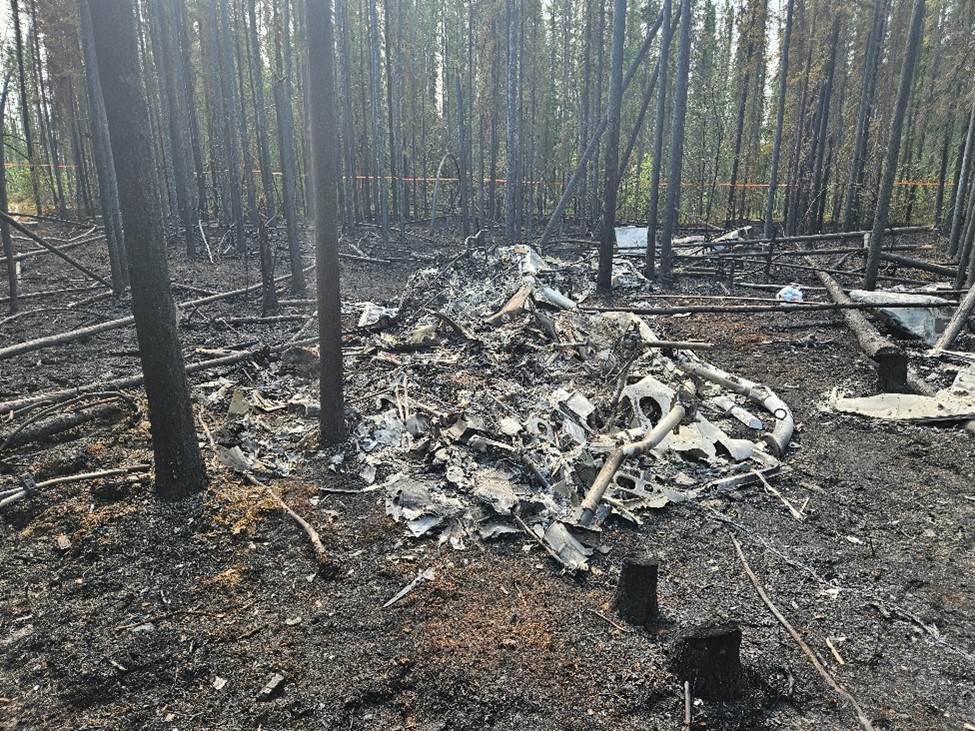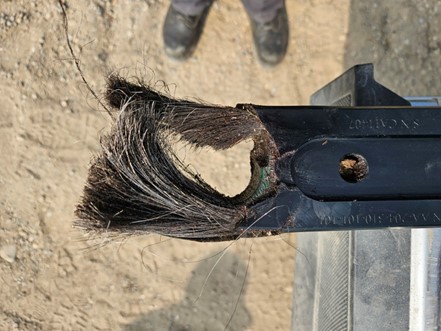Air transportation safety investigation A24W0079
Table of contents
Collision with terrain
Great Slave Helicopters 2018 Ltd.
Bell Textron Inc. 212
Fort Good Hope Airport (CYGH), Northwest Territories
The occurrence
On 28 June 2024, a Bell Textron Inc. 212 helicopter operated by Great Slave Helicopters 2018 Ltd. was in the area of Fort Good Hope, Northwest Territories, supporting wildfire suppression efforts. Shortly after takeoff from Fort Good Hope Airport (CYGH), the helicopter experienced a main rotor blade separation from the head. Immediately thereafter, the remaining rotor blade and rotor head separated from the mast. The helicopter then collided with the terrain, resulting in a post-impact fire.
The pilot, who was the only occupant on board, was fatally injured. The TSB is investigating.
Media materials
Deployment notice
TSB to deploy a team of investigators following a helicopter accident at Fort Good Hope Airport, Northwest Territories
Edmonton, Alberta, 28 June 2024 — The Transportation Safety Board of Canada (TSB) will be deploying a team of investigators following an accident involving a Bell Textron Inc. B212 helicopter, operated by Great Slave Helicopters 2018 Ltd. that occurred earlier today at Fort Good Hope Airport, Northwest Territories. The TSB will be gathering information and assessing the occurrence.
Investigation information
Map showing the location of the occurrence
Investigator-in-charge

Jeremy Warkentin joined the Transportation Safety Board of Canada (TSB) in 2017 as a Regional Senior Technical Investigator, in the Aviation Investigations Branch, at the regional office in Edmonton, Alberta.
Mr. Warkentin is a graduate of the British Columbia Institute of Technology’s Aircraft Maintenance Engineer (AME) program and has more than 20 years of aviation experience working for several fixed wing operations as a licensed Aircraft Maintenance Engineer, Quality Assurance Manager and Base/Production Manager. He holds both an M1 and M2 license, and has experience on aircraft ranging in size from the Cessna 152 to the Airbus A321.
Photos
Class of investigation
This is a class 3 investigation. These investigations analyze a small number of safety issues, and may result in recommendations. Class 3 investigations are generally completed within 450 days. For more information, see the Policy on Occurrence Classification.
TSB investigation process
There are 3 phases to a TSB investigation
- Field phase: a team of investigators examines the occurrence site and wreckage, interviews witnesses and collects pertinent information.
- Examination and analysis phase: the TSB reviews pertinent records, tests components of the wreckage in the lab, determines the sequence of events and identifies safety deficiencies. When safety deficiencies are suspected or confirmed, the TSB advises the appropriate authority without waiting until publication of the final report.
- Report phase: a confidential draft report is approved by the Board and sent to persons and corporations who are directly concerned by the report. They then have the opportunity to dispute or correct information they believe to be incorrect. The Board considers all representations before approving the final report, which is subsequently released to the public.
For more information, see our Investigation process page.
The TSB is an independent agency that investigates air, marine, pipeline, and rail transportation occurrences. Its sole aim is the advancement of transportation safety. It is not the function of the Board to assign fault or determine civil or criminal liability.

